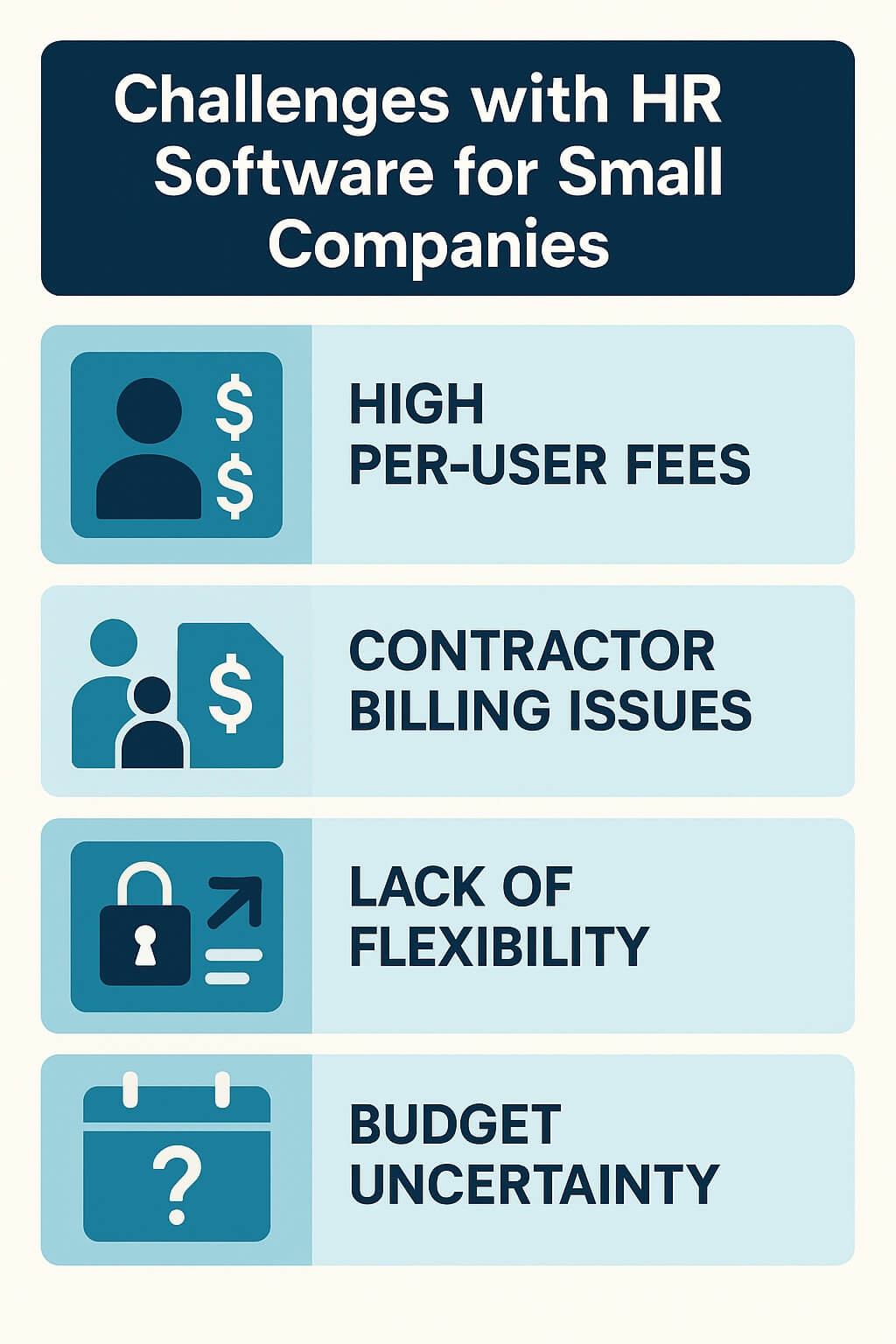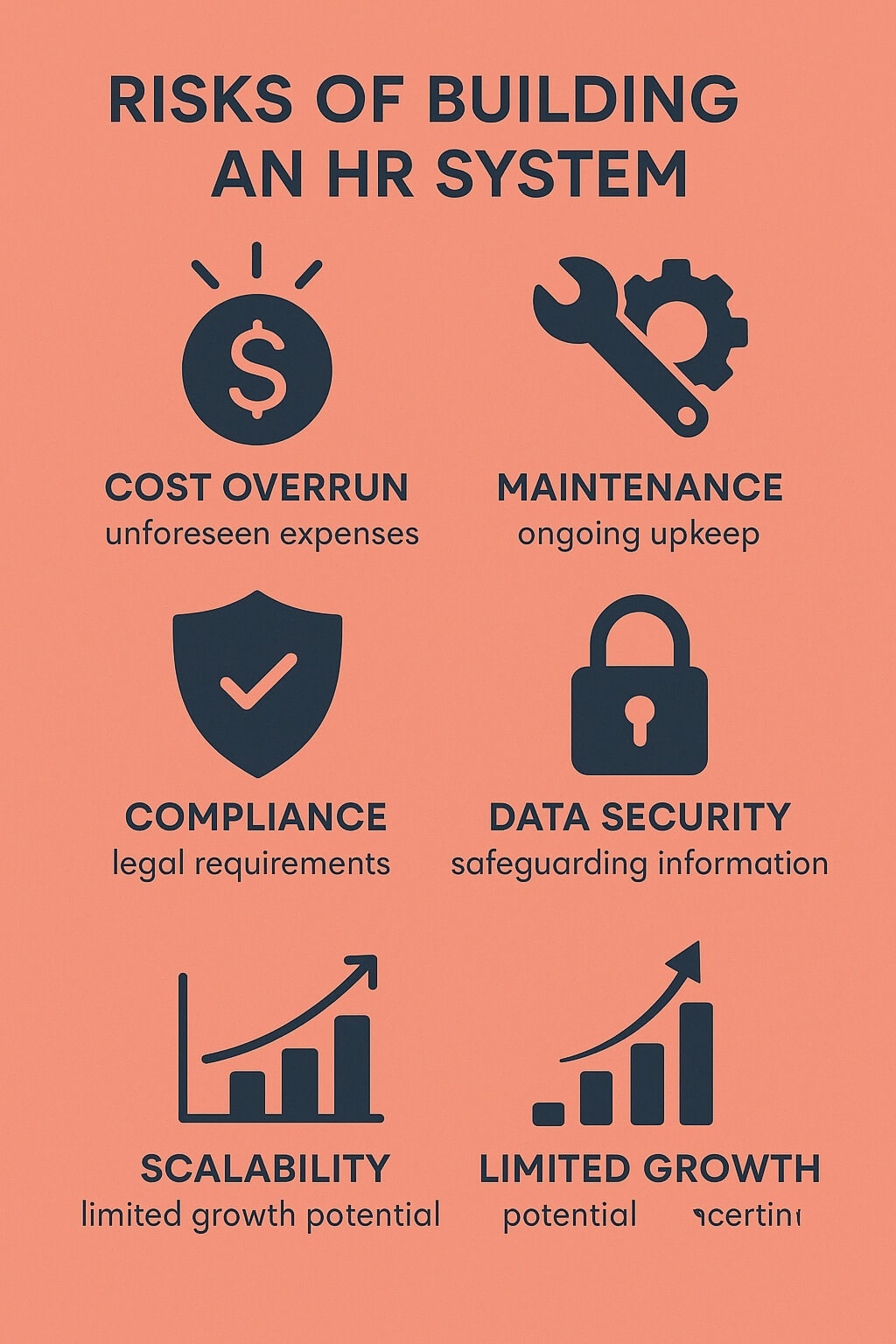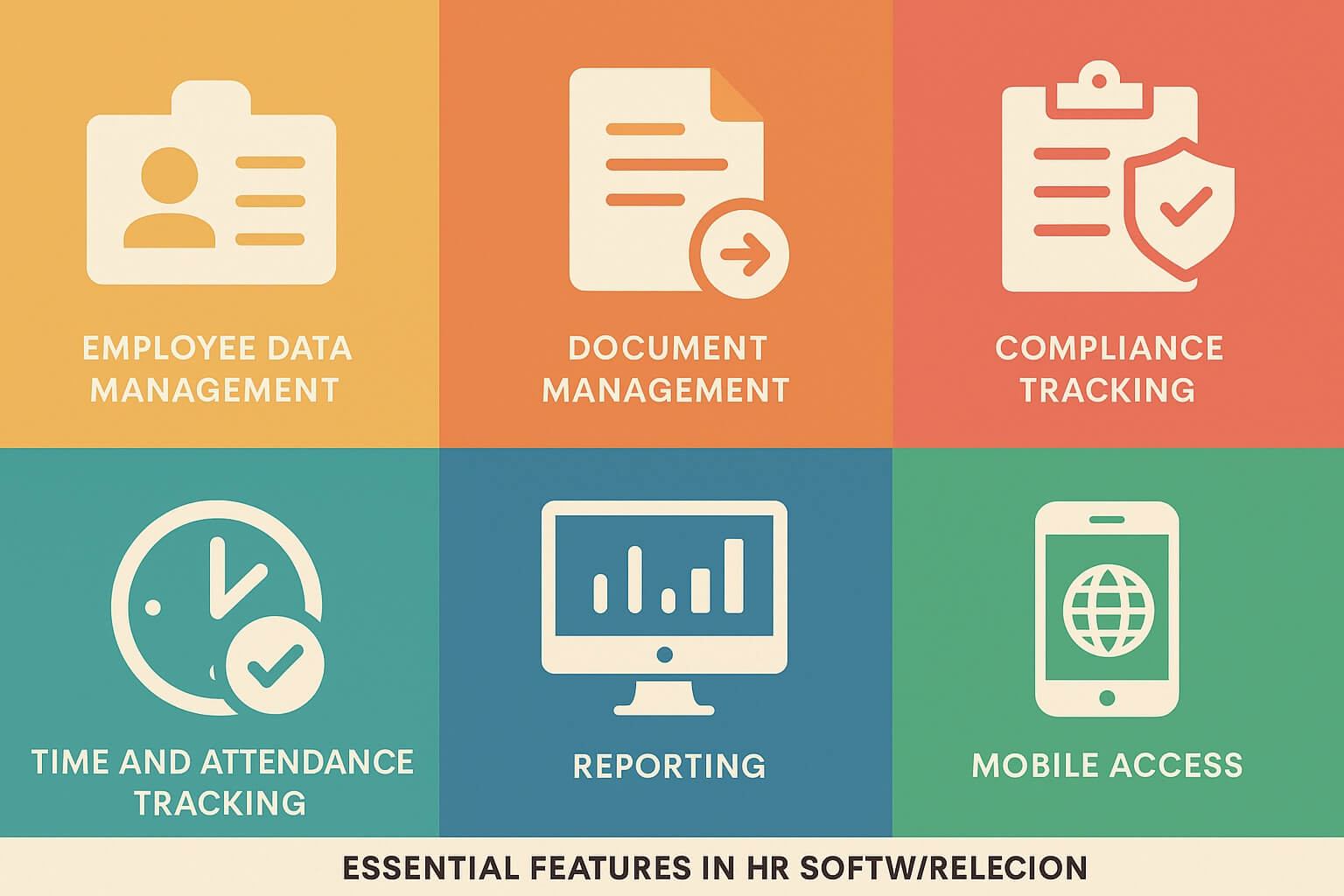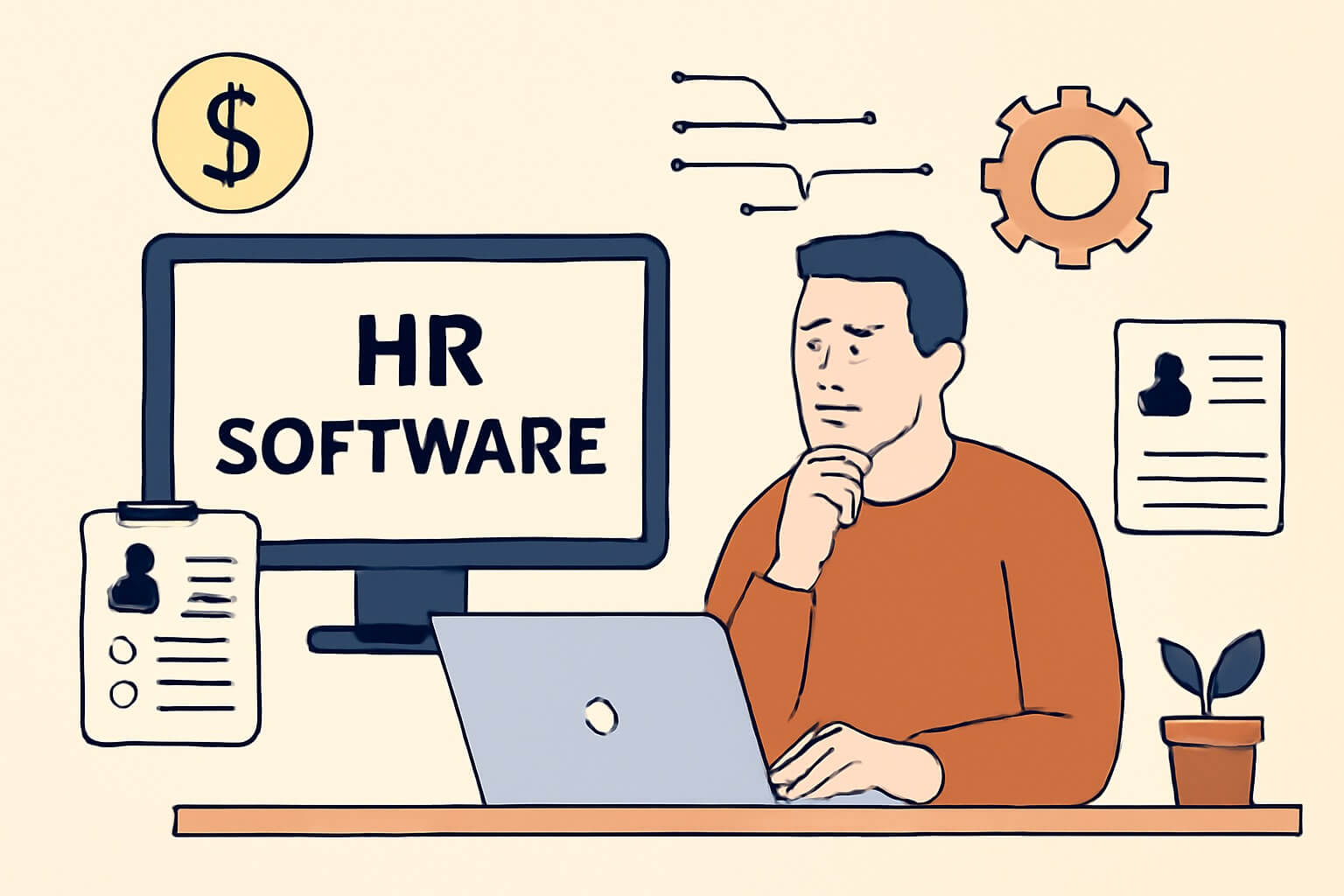When your company grows beyond basic spreadsheet management, the question becomes urgent: should you invest in professional HR software or create a custom system? For small to medium businesses managing both employees and independent contractors, this decision involves balancing cost, functionality, and future growth needs.
Many companies find themselves caught between expensive enterprise solutions and the complexity of managing mixed workforce types. Understanding your options can save thousands in unnecessary costs while ensuring your HR processes remain compliant and efficient.
What are the main challenges small companies face with HR software?
Small companies often struggle with HR software pricing models that seem designed for much larger organizations. Most professional HR platforms charge per user monthly fees that quickly add up when you include contractors and temporary workers alongside full-time employees.
The typical pricing structure becomes problematic when companies have significant contractor workforces. Many HR systems don’t distinguish between employee types for billing purposes, meaning you pay full rates for contractors who may only need basic document storage and compliance tracking.
Additionally, small companies need flexibility that enterprise solutions don’t always provide. They require systems that can handle diverse employment arrangements, varying levels of access, and different compliance requirements without the complexity of features designed for thousand-employee organizations.
Cost predictability is another major concern. Many small businesses operate on tight budgets and need to forecast their HR software expenses accurately. When contractor numbers fluctuate seasonally or project-based, variable per-user pricing can create budget uncertainty.

How much should a small company expect to spend on HR software?
Some HR software options start as low as $1.50 per user monthly for essential features, making them accessible for small businesses. However, these basic plans often lack advanced features needed for contractor management or comprehensive reporting.
Mid-tier options typically range from $10 per employee per month, offering more comprehensive feature sets including workflow automation, recruiting tools, and analytics. For a company with 30 employees and 50 contractors, this could mean monthly costs ranging from $120 to $800 depending on the platform and feature requirements.
The hidden costs often include setup fees, training time, data migration expenses, and integration costs with existing systems. Some platforms also charge extra for features that small businesses consider essential, such as basic reporting or mobile access.
Several reputable HR platforms offer free tiers for small teams, with some providing full functionality for up to five users. These free options can provide significant value for companies just beginning to formalize their HR processes.
What are the best budget-friendly HR software options available?
The market offers several free and low-cost HR software solutions specifically designed for small businesses, each with different strengths and limitations.
Free options typically provide basic employee data management, time-off tracking, and document storage. These platforms work well for companies with straightforward HR needs and minimal compliance requirements.
Low-cost paid options usually add features like automated workflows, basic reporting, performance management tools, and integration capabilities with accounting or payroll systems. The key is finding platforms that offer contractor-specific features without charging full employee rates.
Some platforms specialize in mixed workforce management, offering different pricing tiers for employees versus contractors. These solutions recognize that contractors often need limited system access compared to full-time employees.
All-in-one solutions that include payroll processing can be more cost-effective than separate systems, particularly for companies that want to streamline their vendor relationships and reduce integration complexity.
When does building a custom HR system make sense?
Building a custom HR system becomes attractive when your workforce structure doesn’t fit standard software models or when specific industry requirements make off-the-shelf solutions inadequate.
Companies with unique contractor management needs often find that custom systems provide better workflow alignment. This is particularly true for businesses in creative industries, consulting, or project-based work where contractor relationships vary significantly from traditional employment models.
The technology needed for managing independent contractor workforces differs significantly from traditional employee management systems, making custom solutions potentially more suitable for contractor-heavy organizations.
Budget considerations also play a role. If monthly subscription costs for commercial software exceed the one-time investment in custom development, building your own system may provide better long-term value.
Custom systems offer complete control over features, user interface design, and integration capabilities. This control becomes valuable when you need specific reporting formats, unique approval workflows, or integration with specialized industry software.
What are the risks of building your own HR system?
Custom HR system development carries significant risks that many small companies underestimate. The most obvious risk is cost overrun, as development projects frequently exceed initial estimates due to scope creep and unforeseen technical challenges.
Maintenance and updates represent ongoing costs that aren’t always apparent upfront. Unlike commercial software that receives regular updates and security patches, custom systems require dedicated technical resources for maintenance, bug fixes, and feature additions.
Compliance risks are particularly concerning in HR applications. Commercial HR software vendors invest heavily in ensuring their platforms meet employment law requirements, data protection regulations, and industry standards. Custom systems may inadvertently create compliance gaps that expose companies to legal risks.
Data security represents another significant concern. Professional HR platforms implement enterprise-grade security measures, regular backups, and disaster recovery procedures that are expensive and complex to replicate in custom systems.
Scalability issues often emerge as companies grow. Custom systems built for current needs may require significant redevelopment as workforce size increases or business requirements become more complex.

How can you evaluate whether custom development fits your budget?
Accurate budget evaluation for custom HR system development requires understanding both upfront and ongoing costs. Initial development typically costs several times more than the first year of commercial software subscriptions, but may provide long-term savings depending on workforce size and feature requirements.
Development costs vary widely based on system complexity, but basic HR systems typically require 3-6 months of developer time. More sophisticated systems with contractor management, reporting, and integration features can require 6-12 months of development effort.
Consider the total cost of ownership over three to five years, including initial development, ongoing maintenance, hosting costs, security updates, and feature additions. Compare this against equivalent commercial software subscription costs over the same period.
Factor in opportunity costs of internal resources spent on system development and maintenance. Time spent managing custom software development is time not spent on core business activities that drive revenue growth.
Risk assessment should include potential costs of system failures, data breaches, or compliance issues that could result from custom system limitations or security vulnerabilities.
What features should you prioritize in HR software selection?
Essential features for mixed workforce management include employee data management with different access levels for various worker types, document storage and sharing capabilities, and basic compliance tracking for both employees and contractors.
Time and attendance tracking becomes crucial for businesses with hourly workers or contractors billing by time. Look for systems that can handle different pay structures, approval workflows, and integration with payroll processing.
Modern contractor management systems should include payment processing capabilities and customizable workflows based on your specific needs, reducing manual administrative tasks and improving accuracy.
Reporting capabilities help you understand workforce costs, compliance status, and performance trends. Even basic reporting can provide valuable insights for business decision-making and budgeting.
Integration capabilities ensure your HR system works well with existing accounting, payroll, and project management software. Seamless data flow between systems reduces manual data entry and improves accuracy.
Mobile access has become increasingly important, particularly for companies with remote workers or field-based contractors who need to access systems from various locations.

How do you manage both employees and contractors in one system?
Specialized contractor management features should include flexible contract templates, automated onboarding and offboarding processes, and tools to help manage classification compliance risks.
Effective mixed workforce management requires different permission levels and system access for various worker types. Employees typically need full access to benefits information, company policies, and internal communication tools, while contractors may only need access to project-specific documents and time tracking.
Compliance tracking becomes more complex with mixed workforces, as different worker types have different legal requirements for documentation, tax reporting, and employment law compliance.
Payment processing and expense management often differ between employees and contractors, requiring systems that can handle various payment methods, tax treatment, and approval workflows based on worker classification.
Communication and document sharing features should allow for selective information sharing, ensuring contractors receive relevant project information while maintaining confidentiality of sensitive employee data.
What are the pros and cons of no-code HR system builders?
No-code platforms offer an middle ground between expensive commercial software and full custom development. These platforms allow non-technical users to create sophisticated systems using pre-built components and drag-and-drop interfaces.
Benefits include faster development timelines, lower upfront costs compared to custom coding, and the ability to modify systems without technical expertise. Many no-code platforms also handle hosting, security, and basic maintenance automatically.
Popular database platforms can be configured to handle HR workflows, employee records, contractor management, and basic reporting. With proper setup, these systems can provide many of the features found in commercial HR software at significantly lower costs.
Limitations include reduced customization flexibility compared to fully custom development and potential scalability constraints as data volume grows. Integration capabilities may also be more limited compared to commercial HR platforms.
Long-term considerations include platform dependency risks and potential migration challenges if you outgrow the no-code solution. However, for many small companies, these platforms provide an effective solution that can evolve with business needs.
How do you ensure compliance when building or choosing HR systems?
Compliance requirements vary significantly based on location, industry, and workforce composition. Employment law, data protection regulations, and tax requirements all impact HR system design and functionality.
Working with legal teams to establish policies and guardrails for contractor engagement is essential, and these policies need technological support to ensure enforcement.
Commercial HR software vendors typically invest heavily in compliance features and regular updates to reflect changing regulations. This ongoing compliance maintenance can be expensive and complex to replicate in custom systems.
Data protection and privacy requirements, such as GDPR in Europe or state privacy laws, require specific technical implementations for data handling, storage, and user rights management.
Audit trails and documentation capabilities become crucial for demonstrating compliance during regulatory reviews or legal proceedings. Systems should automatically track changes, approvals, and access patterns.
Regular compliance reviews and updates ensure your chosen system continues to meet evolving regulatory requirements, whether through vendor updates or custom system modifications.
What questions should you ask HR software vendors?
Understanding total cost of ownership requires detailed questions about pricing models, including setup fees, per-user costs for different worker types, and charges for additional features or integrations.
Technical questions should cover data security measures, backup and recovery procedures, system uptime guarantees, and integration capabilities with your existing software systems.
Support and training availability can significantly impact implementation success. Ask about onboarding assistance, ongoing support options, and training resources for your team.
Scalability discussions should address how the system handles growth in user numbers, data volume, and feature requirements. Understanding upgrade paths and migration options helps with long-term planning.
Compliance support questions should cover how the vendor keeps systems updated with changing regulations, what compliance reporting is available, and how they handle data protection requirements.
Customization options help you understand whether the system can adapt to your specific workflows and requirements without requiring expensive modifications or workarounds.
Should you start with free software and upgrade later?
Starting with free HR software can provide valuable experience and help you understand your actual requirements before investing in paid solutions. This approach allows you to test workflows, identify essential features, and train your team without financial commitment.
Free platforms often provide sufficient functionality for basic HR processes, allowing you to establish standardized procedures and document management systems. This foundation makes future migrations to more sophisticated systems smoother and more successful.
The gradual upgrade approach helps you avoid over-buying features you don’t actually need while ensuring you don’t miss critical functionality. You can evaluate different vendors and systems based on real usage experience rather than theoretical requirements.
However, migration costs and effort should be considered when planning this approach. Moving data and retraining users requires time and resources that may offset some of the initial cost savings.
Timing the upgrade decision involves balancing current system limitations against the costs and disruption of changing systems. Plan upgrades during periods of stable workforce size and minimal other operational changes.
Making the right choice for your company’s future
The decision between buying affordable HR software and building a custom system ultimately depends on your specific workforce composition, budget constraints, and growth plans. Companies with straightforward HR needs and standard employment arrangements often find that budget-friendly commercial solutions provide the best value and lowest risk.
Organizations with significant contractor workforces, unique industry requirements, or very specific workflow needs may benefit from custom solutions, provided they have the technical resources and budget to support long-term maintenance and development.
The key to success with either approach is realistic planning, thorough evaluation of total costs, and careful consideration of compliance requirements. Whether you choose commercial software or custom development, the goal is creating sustainable HR processes that support your business growth while managing risk and controlling costs.
Remember that your HR system choice isn’t permanent. Many successful companies start with simple solutions and evolve their systems as their needs become more sophisticated and their budgets allow for more advanced functionality.
